Gemstone Information
James Avery Jewelry selects the best quality natural, enhanced, and lab-created gemstones based on three qualities: beauty, rarity, and durability. Beauty can be measured by the gemstone’s color, clarity and cut. Rarity is determined by the scarcity of the gemstone in nature or in the marketplace. Durability is based on the hardness, toughness, and stability of the gem. James Avery Jewelry does not use any imitation or artificial gemstones.
Carats, Shapes and Sizes
Carats are a measure of weight in gemstones. Due to variations in the chemical composition and the density of various types of gemstones, a one carat (1.00 ct.) stone will vary in size depending on the type of gemstone. For instance, the density of a topaz is greater than the density of a peridot. Therefore, the same weight of a one carat topaz will physically be a smaller stone than a peridot of the same weight. Gemstone sizes are usually given in carat weight (ct) or described in millimeters (mm). Some typical gemstone shapes and approximate weights for various sizes and shapes are shown below, although the exact size varies depending on the type of gemstone.
In addition to weight and size, the prices of finer gemstones typically vary depending on the shape, cut, degree of clarity, and the tone and color of each gemstone.
Approximate Weights for Gemstone Shapes
| Approximate Carat Weight | Oval Cut | Pear Cut | Heart Cut | Square Princess Cut | Emerald Cut | Round Brilliant Cut |
|---|---|---|---|---|---|---|
| .25 ct |  |
 |
 |
 |
 |
 |
| .50 ct |  |
 |
 |
 |
 |
 |
| 1.0 ct |  |
 |
 |
 |
 |
 |
| 1.5 ct |  |
 |
 |
 |
 |
 |
| 2.0 ct |  |
 |
 |
 |
 |
 |
Natural Gemstones
A natural gemstone is any stone that has crystallized in the earth unassisted by man before it is mined. Gemstones are rated on the Mohs Scale of Hardness which indicates the durability of the stone in jewelry. Minerals are ranked from the softest (1 for talc) to the hardest (10 for diamond).
Enhanced Gemstones
For select gemstones, enhancements such as heat, oil, wax, resin, diffusion, dye, stabilization, and irradiation are used to improve color, finish and/or durability. Some gemstone enhancements are not permanent or can be damaged during cleaning. Visit our retail stores for professional assistance.
Lab-Created Gemstones
A gemstone that is grown in a laboratory is not imitation or artificial. Rather, it is carefully crystallized over time. lab-created gemstones have essentially the same optical, physical, and chemical properties as a natural gemstone. Only a trained gemologist can tell them apart.
Natural gemstones are crystals formed by heat and pressure within the earth. A similar heat and pressure environment is created in the laboratory using the same natural elements. The lab-created gemstones used by James Avery Artisan Jewelry are high quality stones that are created in one of two ways: (1) a process utilizing synthetic material that takes a few hours; or (2) a process that takes 10 to 14 months to complete.
Layered Gemstones
Layered gemstones add a captivating depth and dimension to jewelry designs, resulting in truly breathtaking pieces that make a statement. What is a layered gemstone, you may ask? Like the name insinuates, these feature layers of different gemstones, with one of the layers usually being mother of pearl or a similar gemstone with a neutral and slightly transparent hue. From vibrant lab-created rubies to sapphires, our gemstone combinations are thoughtfully curated to evoke a sense of elegance and sophistication. Whether you're seeking a statement ring, a delicate pendant or a pair of stunning earrings, our collection of layered gemstone designs offers a multitude of options to suit your personal style and preferences.
Doublets and triplets are two of the primary types of layered gemstones that we offer. A doublet stone is created by layering two different stones: a clear or colored gemstone over another gemstone. A triplet, on the other hand, features layers of three different stones. Many different types of jewelry designs can feature doublets and triplets, from pendants and earrings to rings and necklaces. Due to the unique way we produce our doublet and triplet jewelry, special care is important. Avoid chemicals, cosmetics and ultrasonic cleaners—as well as contact with water, soap, steam and extreme humidity. Wipe the stone with a soft cloth to clean and consider investing in our gem and pearl cleaner.
Care and Cleaning
We recommend removing all gemstone jewelry before any vigorous physical activity to prevent loss or damage to the gemstone or setting. Most gemstones can be cleaned using a soft brush and a mild solution of lukewarm, soapy water. Use only those jewelry cleaners that are made specifically for cleaning delicate gems and pearls. Many gemstones are heat sensitive to high temperatures and direct sunlight. Some gemstones can withstand ultrasonic or steam cleaning; however, avoid the use of harsh chemical dips. For more information on how to care for and clean your James Avery Artisan Jewelry, please visit our Care and Cleaning Information page.
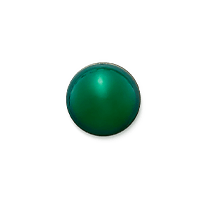
Agate
A mineral in the Quartz family, agate is formed in nearly all colors, from transparent crystals to banded stones of various hues. Avoid all chemicals, ultrasonic cleaners and strong light. Agate ranks 6.5 to 7 on the Mohs Scale of Hardness.
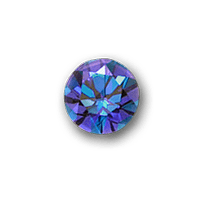
Alexandrite
Alexandrite is the Avery Birthstone for June
Lab-Created Alexandrite is the Avery Birthstone for June Named after Alexander II, Czar of Russia, alexandrite was discovered on this ruler’s birthday in the early 1830’s. Alexandrite is the color changing variety of the mineral chrysoberyl. It changes from blue-green in daylight or fluorescent light to red-purple in lamp or candlelight. Alexandrite ranks 8.5 on the Mohs Scale of Hardness. Learn more about lab-created gemstones.
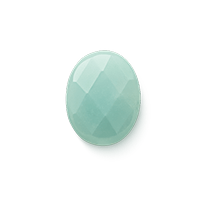
Amazonite
Named after the Amazon River in Brazil, this light green to light bluish-green colored gemstone is believed to attract luck and good fortune. This gemstone is often coated with a colorless wax to enhance the finish. Avoid all chemicals, ultrasonic cleaners and strong light. Amazonite ranks 6 to 6.5 on the Mohs Scale of Hardness.
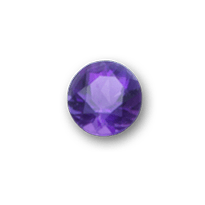
Amethyst
Amethyst is the Avery Birthstone for February
Treasured by ancient kings and emperors, amethyst is often considered the color of royalty and was once prized even more than diamonds. Often referred to as the Bishop's Stone, amethyst was worn by bishops to symbolize their triumph over worldly vices. Darker hues of amethyst are rarely enhanced to perfect their color, although some varieties do respond well to heat enhancement. Amethyst is considered the most highly prized variety of quartz, and comes in a range of purple shades that vary in intensity from pale lilac to deep purple. Deposits for amethyst are found in Brazil, Uruguay, Madagascar, and regions of Africa. Avoid direct sunlight or extreme or prolonged heat, as this can cause damage and fading. Amethyst ranks 7 on the Mohs Scale of Hardness.
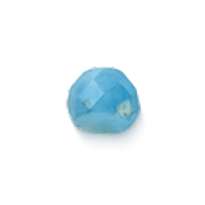
Apatite
Heirloom-quality apatite gemstones are extremely rare and can vary in hue from colorless to vivid green, blue, violet, pink or yellow. Apatite is found around the world in climates as diverse as Madagascar, Norway and the United States, and its color depends on its origin. Transparent stones provide excellent clarity for faceted cuts. This gemstone is often wax or polymer stabilized to enhance the finish. Avoid all chemicals, ultrasonic cleaners, and extreme or prolonged heat. Apatite is ranked 5 on the Mohs Scale of Hardness.
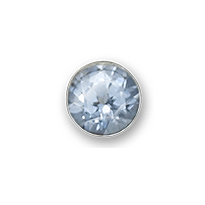
Aqua Spinel
Lab-Created Aqua Spinel is the Avery Birthstone for March
Centuries ago, in Sanskrit writings, spinel was called the daughter of ruby, adored, yet somehow different. The Crown Jewels of Great Britain are graced with spinels and have resided in the regalia of kingdoms throughout history. Found in Myanmar (Burma) and Sri Lanka, spinel is a durable gemstone that comes in a variety of colors including oranges, pinks, blues, lavenders, mauves and vivid reds. Lab-created spinel has been on the market since the 1920's. Spinel ranks 8 on the Mohs Scale of Hardness. Learn more about lab-created gemstones.
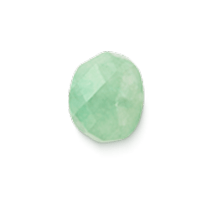
Aventurine
Aventurine is a translucent quartz gemstone whose distinctive metallic inclusions provide a sparkling effect known as “aventurescence.” Though most often occurring in green, aventurine is also found in orange, brown, yellow, blue and gray. This gemstone is often wax or polymer stabilized to enhance the finish. Avoid all chemicals, ultrasonic cleaners, and extreme or prolonged heat. Aventurine are durable gemstones, mined in places as far flung as Brazil, Chile, India, Austria, Spain, Russia and Tanzania, and rank 6.5 to 7 on the Mohs Scale of Hardness.

Blue Topaz
Blue Topaz is an Avery Birthstone for December
Blue topaz was once extremely rare. However, today it is one of the most available topaz colors on the market. Most of the topaz found in nature is colorless. To achieve their beautiful blue color, a colorless topaz goes through a process called irradiation. After the raw topaz is extracted from the earth and cut, it is irradiated to brown and then heated to sky blue. This enhancement process is permanent. Most blue topaz is mined in Brazil, Sri Lanka and Australia. Avoid direct sunlight or extreme or prolonged heat, as this can cause damage and fading. Blue topaz ranks 8 on the Mohs Scale of Hardness.
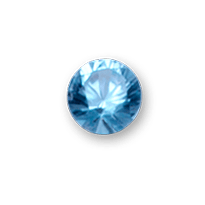
Blue Zircon
Blue Zircon is a Avery Birthstone for December
In the middle ages, zircon was said to aid sleep, bring prosperity, and promote honor and wisdom to those who wear it. The name probably comes from the Persian word zargun, which means “gold-colored.” The mineral zircon comes in many colors using a heat enhancement process. It is most often sought after in the shade of blue, and is famous for its luster and fire. Major sources of zircon are found in Thailand, Cambodia, and Vietnam. Avoid rough wear since these stones tend to abrade. Zircon ranks 7.5 on the Mohs Scale of Hardness.
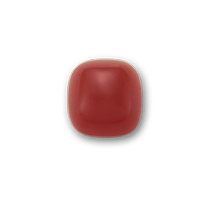
Carnelian
The word carnelian is derived from the Latin word carno, carnis meaning flesh, in reference to the color of the stone. Carnelian was used over 2,000 years ago during the Roman era to make signet rings for imprinting a seal with wax on correspondence or other important documents. Carnelian is a member of the microcrystalline group within the quartz stone family. Heated to improve its color, carnelian comes in an array of colors including shades of red, orange, or brown colored chalcedony. Sources are found in India, Brazil, and Uruguay. Carnelian ranks 6.5 to 7 on the Mohs Scale of Hardness.
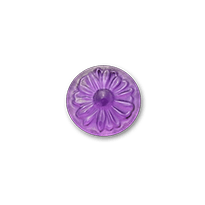
Carved Gemstones
Many of our jewelry designs feature meticulously carved gemstones, each showcasing a unique blend of skill and creativity. Carved gemstones add a touch of intricate detail and depth to a design, resulting in extraordinary pieces that are true works of wearable art. Whether delicate floral motifs or intricate geometric patterns speak to you, our carved gemstone designs will showcase the beauty of your favorite gem in a new and captivating way. From pendants and earrings to statement rings and bracelets, our jewelry pieces feature a variety of carved gemstones, including vibrant lab-created amethyst, serene aqua spinel, versatile quartz and much more. Discover the perfect piece that speaks to your unique style and allows you to express your individuality with grace and sophistication.
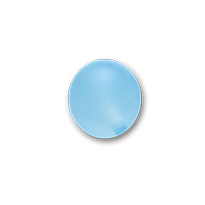
Chalcedony
Chalcedony was a treasured gemstone of the ancient world. The Victorians also prized chalcedony for carved cameos and intaglios because its fine texture allows for delicate and intricate workmanship. A member of the quartz stone family, chalcedony is found in all 50 states and comes in a wide variety of colors, tones, and shapes. Most of the chalcedony used in jewelry is color enhanced for a more consistent color. Chalcedony ranks 6.5 to 7 on the Mohs Scale of Hardness.
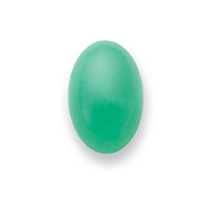
Chrysoprase
Chrysoprase was a favorite of Frederick the Great of Prussia who loved the bright green color. Unlike most other green stones, which owe their color to chromium or vanadium, chrysoprase derives its color from a nickel silicate. This gemstone is featured on many buildings in Prague in the Czech republic, including the Chapel of St. Wenceslaus. Deposits are found in Australia, Brazil, India, Malagasy Republic, South Africa, Russia, and the U.S. Chrysoprase ranks 6.5 to 7 on the Mohs Scale of Hardness.
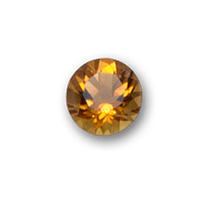
Citrine
Citrine is the Avery Birthstone for November
Named after the French word for lemon, many citrines have a bright, sunny yellow color. Citrines are also available in hues ranging from gold to orange-brown. Brownish varieties are commonly heated and magically turn into the bright yellow or orange colors. This enhancement method is permanent and will endure for the life of the gemstone. During the romantic era of the 1800’s, citrine was said to symbolize joy and lightheartedness. Citrine is a member of the quartz family, and natural citrine deposits are mined mostly in Brazil, but also in Malagasy Republic, the U.S., Spain, Russia, France, and Scotland. Citrine should be kept away from prolonged exposure to strong light or heat, which may damage or fade the stone. Citrine ranks 7 on the Mohs Scale of Hardness.
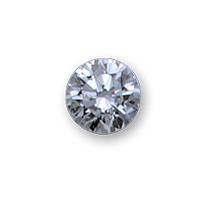
Diamond
Diamond is the Avery Birthstone for April
Derived from the Latin diamas meaning the unconquerable, diamond has maintained its position throughout history as a perfect icon for love and marriage. Although white is the most common color, diamonds actually come in a variety of colorful hues. The diamond is the only gemstone to rank 10 on the Mohs Scale of Hardness.
Learn about diamonds and best practices for cleaning them properly and caring for them. View Diamond Information
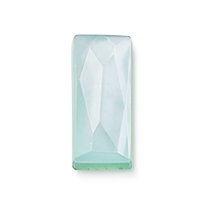
Doublets and Triplets
A doublet stone is created by layering two different stones—a clear or colored gemstone over another gemstone. A triplet is created when layering three different stones. Due to the unique way doublet and triplet jewelry is produced, special care is advised. Avoid chemicals, cosmetics and ultrasonic cleaners as well as contact with water, soap, steam and extreme humidity. Wipe the stone with a soft cloth to clean.
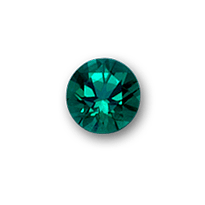
Emerald
Lab-Created Emerald is the Avery Birthstone for May
The word “emerald” comes from a Sanskrit word meaning “the green of growing things”. Legends gave emerald the power to make its wearer more intelligent and quick-witted. The first known emerald mines were in Egypt, dating back to over 300 B.C. Cleopatra was known to have a passion for emerald, and the stone was featured in many of her royal adornments. Emerald is the most famous member of the beryl family. Emerald ranks 7.5 to 8 on the Mohs Scale of Hardness. Learn more about lab-created gemstones.
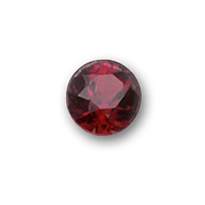
Garnet
Garnet is the Avery Birthstone for January
Garnet traces its roots to the Nile Delta in 3100 B.C., where Egyptian artisans would craft the gemstone into beads or inlay them into hand-wrought jewelry. Legend proclaims this jewel had the ability to illuminate the night sky. Stories of The Ark say Noah used garnet as a lamp on his bow as he cast about on the ocean. Garnet received its name from the ancient Greeks because the color reminded them of the “granatum,” or the pomegranate seed. The garnets in jewelry designed by James Avery are generally in the red-violet to red-brown color range. Garnets mainly come from the east Coast of Africa. Small deposits are found in the United States and the Czech Republic. Garnet ranks 7 to 7.5 on the Mohs Scale of Hardness.
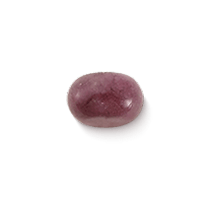
Lepidolite
Ranging from a deep purple to the palest pink, lepidolite is a mica mineral, meaning it formed in layers. The layers, or sheets as they are called by gemologists, give this rare gemstone a glimmer that can be seen when light reflects off its inclusions. Lepidolite is mined in Brazil, Japan, Madagascar, Russia, Sweden, Australia and in the United States, in Maine, California and New Mexico. It is advised to avoid exposure to harsh chemicals, high temperatures and strong pressure due to the wax stabilization used to enhance the finish. Lepidolite is often permeated with quartz and is considered quite tough yet rates a 2.5 to 4 on the Mohs Scale of Hardness.
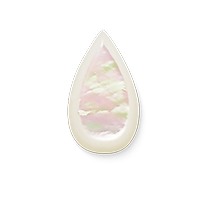
Mother-of-Pearl
Known for its translucent quality and created from a composite material called “nacre” produced by some mollusks, such as oysters, mother of pearl has a very distinct multi-colored effect with a faint glow. Like pearls, mother-of-pearl is considered organic because it originates from a living creature. Avoid heat, all chemicals, perfumes and perspiration. Store away from other items and avoid rough wear. If strung, be sure string is completely dry before wearing. Mother-of-pearl ranks 2.5 to 4.5 on the Mohs Scale of Hardness.
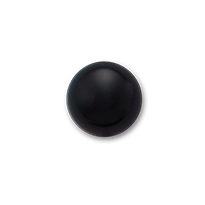
Onyx
The name of this gemstone comes from the Greek word onux, which means fingernail. According to roman mythology, cupid cut the divine fingernails of Venus with an arrowhead while she was sleeping. The fates turned the clippings into stone so that no part of the goddess would ever perish. Sometimes the onyx has a white band or ribbons that are often carved into delicate raised designs with layered backgrounds called cameos. The onyx used in James Avery jewelry is formed by color enhancing chalcedony, which is a variety of quartz. The primary color used in our line is black, although blue and other colors are sometimes used to accent a particular design. Onyx is mined in Brazil, Uruguay and California. Onyx ranks 6.5 to 7 on the Mohs Scale of Hardness.
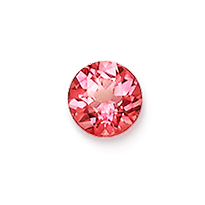
Padparadscha
One of nature's most durable gemstones, the sapphire is a token of trust and loyalty. The color of this pink/orange sapphire earns it the name Padparadscha [pahd-puh-rah-zhuh] which translates to lotus-colored. Padparadscha ranks 9 on the Mohs Scale of Hardness.
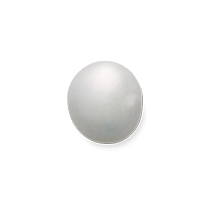
Pearls
According to ancient Chinese legend, the moon holds the power to create pearls, instilling them with its celestial glow and mystery. Pearls have been treasured for their lustrous, creamy texture, and subtle iridescent reflections since the dawn of mankind. Pearls are unique in the world of colored gemstones since they are the only gemstone formed within a living creature. Because natural pearls are so rare and difficult to recover from the ocean’s depths, man invented the technique of culturing salt and freshwater pearls from mollusks carefully seeded with irritants similar to those produced by nature. Cultured pearls come in many beautiful colors including: gold, yellow, champagne, pink, peach, lavender, gray and black. Due to demand for perfectly matched white pearl strands, cultured fresh and saltwater pearls are often bleached to achieve a uniform color. They may also be polished in tumblers to clean and improve their luster. Dyes, heat treatment, and irradiation are sometimes applied to produce a wide range of hues such as yellow, green, blue, purple, gray, and black in freshwater and Akoya cultured pearls. Some South Sea cultured pearls are bleached to lighten their hue, but most South Sea and Tahitian cultured pearls are not subjected to enhancements to create or improve their color. Cultured pearls come in many shapes and sizes. Avoid heat and all chemicals, perfumes, perspiration. Store pearls away from other items and avoid rough wear. If strung, be sure string is completely dry before wearing. Pearl ranks 3 to 4 on the Mohs Scale of Hardness.
Learn about pearls and best practices for cleaning them properly and caring for them. View Pearl Information
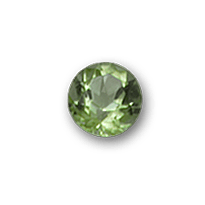
Peridot
Peridot is the Avery Birthstone for August
Peridot is the Avery Birthstone for August, Peridot is one of the few gemstones that exist only in the color of green. The ancient romans noticed its color did not change in artificial light, so they named the stone “evening emerald”. It is found in the U.S. in Arizona and New Mexico, Burma, Pakistan and China. Peridot ranks 6.5 to 7 on the Mohs Scale of Hardness.
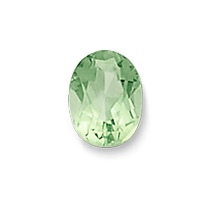
Prasiolite
The transparent green to yellowish green color of prasiolite is the result of a heat treatment, though a few natural occurrences of this variety have been found. The major source of prasiolite is found in Brazil. Prasiolite ranks 7 on the Mohs Scale of Hardness.
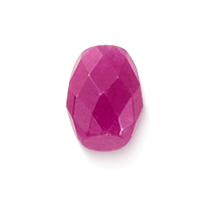
Quartzite
Quartzite is a crystalline structure of quartz that is mined around the world and typically comes in shades white to gray. However, depending on other minerals present at the time the gemstone is forming, quartzite can also be found in pink, red, purple, yellow, orange, brown, green and blue. Quartzite is often dyed, and wax or polymer stabilized, to enhance the finish and color. Avoid all chemicals, ultrasonic cleaners, direct sunlight, and extreme or prolonged heat. Rated a 7 on the Mohs Scale of Hardness, quartzite has been a favorite building material for thousands of years as well as for decorative purposes such as jewelry.
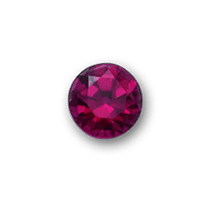
Ruby
Lab-Created Ruby is the Avery Birthstone for July
Celebrated in the Bible and in ancient Sanskrit writings as the most precious of all gemstones, rubies have been the prized possession of emperors and kings throughout the ages. Ruby’s inner fire has been the inspiration for innumerable legends and myths, and to this day no red gemstone can compare to its rich hues. Many people associate its brilliant crimson colors with passion and love. Ruby is the red variety of the corundum mineral species. Rubies can only be red, but are offered in various shades such as pink-red, purple-red, or a brown-red. Ruby ranks 9 on the Mohs Scale of Hardness. Learn more about lab-created gemstones.
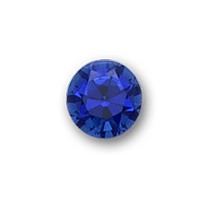
Sapphires
Lab-Created Blue Sapphire is the Avery Birthstone for September,
Lab-Created Pink Sapphire is the Avery Birthstone for October,
Lab-Created White Sapphire is an Avery Birthstone for April
Beloved for centuries, sapphire comes from the mineral corundum. The ancient Persian rulers believed that the earth rested on a giant sapphire and its reflection colored the heavens blue. A gift of a sapphire symbolizes a pledge of trust and loyalty. Sapphire is one of the most durable gemstones and comes in several colors including pink, white, blue and orange. However, they are most noted for their rich blue color. Sapphire ranks 9 on the Mohs Scale of Hardness. Learn more about lab-created gemstones.

Sodalite
Known for its bright-blue color, sodalite often has a violet tint and frequently contains white veins of calcite. Sodalite is named in reference to its sodium or “soda” content. Sources for this gemstone include Brazil, India, Namibia, and the US. It is recommended that rough handling be avoided. Sodalite ranks 5.5 to 6 on the Mohs Scale of Hardness.
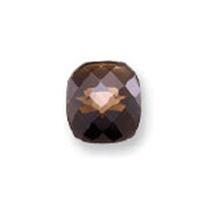
Smokey Quartz
Smokey quartz gets its color as a result of natural radiation. It is known for its versatility, which is alluring in color and clarity. Sources include Brazil, Switzerland, the Himalayas, and Mexico. Smokey Quartz is ranked 7 on the Mohs Scale of Hardness. Ultrasonic cleaners are generally safe but should be used with caution, steaming is not recommended. Avoid prolonged exposure to excessive heat which can alter the color or damage the stone.
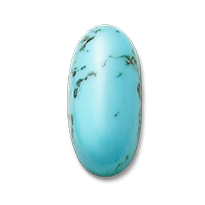
Turquoise
Turquoise is among the oldest known gemstones and has been mined since 3,200 B.C. Turquoise graced the necks of Egyptian Pharaohs and adorned the ceremonial dress of early Native Americans. Turquoise is an opaque, light to dark blue or blue-green gem. The finest color is an intense blue. Turquoise may contain narrow veins of other materials either isolated or as a network. They are usually black, brown, or yellowish-brown in color. Known as the matrix, these veins of color are sometimes in the form of an intricate pattern, called a spider web. To improve its color and durability, turquoise is commonly permeated with plastic, a stable enhancement. It is also sometimes permeated with colorless oil, or wax, which is considered not as stable as plastic. Some turquoise is dyed to improve its color, but rarely, as this is an unstable enhancement. Turquoise is a porous gemstone and special care is required. Turquoise can absorb anything it touches, so it is recommended that contact with cosmetics, perfumes, skin oil, and other chemicals are avoided. Do not expose turquoise to extreme temperatures. Turquoise ranks 5 to 6 on the Mohs Scale of Hardness.